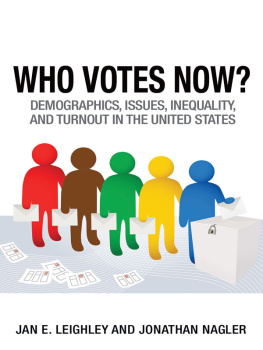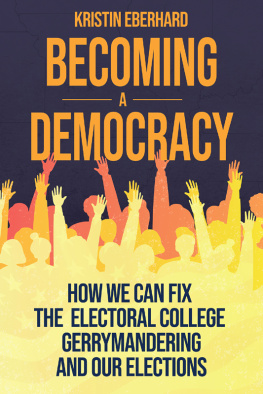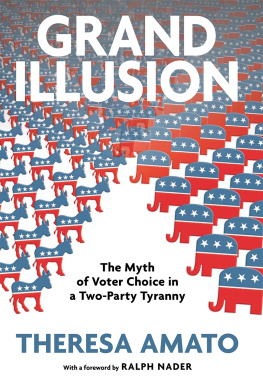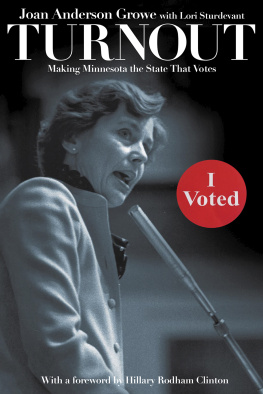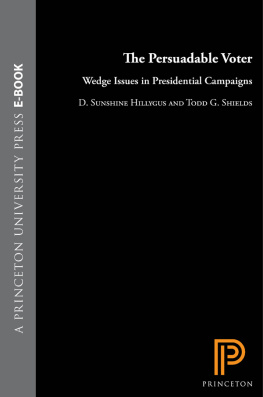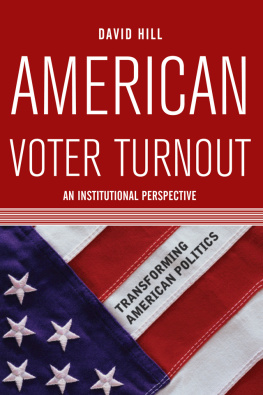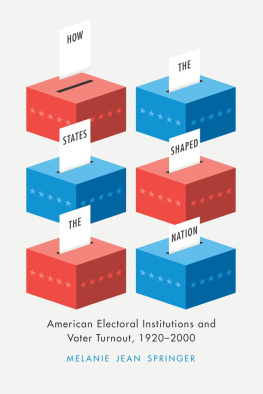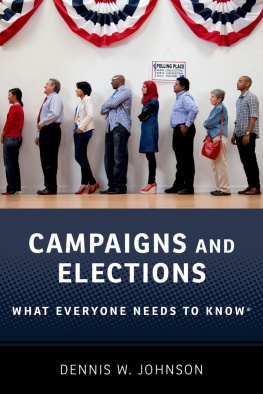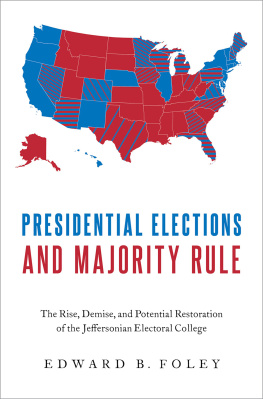
WHO VOTES NOW?

WHO VOTES NOW?
DEMOGRAPHICS, ISSUES, INEQUALITY, AND TURNOUT IN THE UNITED STATES

Jan E. Leighley
AMERICAN UNIVERSITY
Jonathan Nagler
NEW YORK UNIVERSITY
PRINCETON UNIVERSITY PRESS
PRINCETON AND OXFORD
Copyright 2014 by Princeton University Press
Published by Princeton University Press, 41 William Street,
Princeton, New Jersey 08540
In the United Kingdom: Princeton University Press,
6 Oxford Street, Woodstock, Oxfordshire OX20 1TW
press.princeton.edu
Jacket Illustration: Ballot / Ballot EPS Ballot / Ballot AI Ballot / Ballot JPG Ballot.
YCO. Courtesy of Shutterstock.
All Rights Reserved
Library of Congress Cataloging-in-Publication Data
Leighley, Jan E., 1960
Who votes now? : demographics, issues, inequality and turnout in the United States / Jan E. Leighley, American University; Jonathan Nagler, New York University.
pages cm
Includes bibliographical references and index.
ISBN-13: 978-0-691-15934-8 (cloth : alk. paper)
ISBN-10: 0-691-15934-3 (cloth : alk. paper)
ISBN-13: 978-0-691-15935-5 (pbk. : alk. paper)
ISBN-10: 0-691-15935-1 (pbk. : alk. paper) 1. Voter turnoutUnited StatesStatistics.
2. Political participationUnited StatesStatistics. 3. ElectionsUnited StatesStatistics.
I. Nagler, Jonathan. II. Title.
JK1967.L45 2013
324.973dc23
2013016995
British Library Cataloging-in-Publication Data is available
This book has been composed in Sabon
Printed on acid-free paper
Typeset by S R Nova Pvt Ltd, Bangalore, India
Printed in the United States of America
10 9 8 7 6 5 4 3 2 1
Jonathan dedicates this book to his parents, for encouraging reading and civic participation.

Jan dedicates this book to her daughter, Anna Johnson.
Yes, I do more than you know.
Contents
List of Figures
List of Tables
Preface
W ho votes? And does it matter?
These are not new questions in the study of American politics, but they continue to be important ones, and they motivate what we do in this book.
As the title suggests, we owe an enormous intellectual debt to Ray Wolfinger and Steve Rosenstone, who wrote what is now a classic text on voter turnout in the United States, Who Votes? We have written before on the demographics of turnout, and continue to believe that the demographics of turnout are inherently important to questions of democracy and representation.
Intellectually, Who Votes? has had staying power. In addition to a rich description of patterns of turnout across demographic subgroups, Wolfinger and Rosenstone (1980) provided insightful analyses that reflected on common beliefs about every demographic characteristic they investigated. In addition, they emphasized the importance of election rules (especially the closing date for registering to vote) as deterrents to voter turnout. Their last chapter concluded on a somewhat surprising note when they suggested that who votes is not that importantthat voters and nonvoters have similar preferences, and that if everyone voted, there would be few changes to political outcomes.
Much of what Wolfinger and Rosenstone demonstrated stimulated other scholars to take a closer look. In short, their comprehensive description of patterns of turnout across a wide range of demographic subgroups became a theoretical and empirical springboard for subsequent research. Much of this subsequent research expanded on the
Aside from demographics, Who Votes? also initiated sustained attention to whether the legal rules governing elections influence how many vote, as well as who votes. Wolfinger and Rosenstones (1980) extensive data collection on state election laws and their implementation has been updated in various ways by those focusing on whether election laws influence turnout. Whatever their focus, this wide range of studies shares a common point of departure: Wolfinger and Rosenstones key observation that demographics are central to understanding voter turnout.
But Wolfinger and Rosenstones classic work was limited to one presidential electionan election that is now forty years past. And dramatic changes in the demographics of the U.S. population over this long period, along with fundamental changes in political campaigns (e.g., changes in the use and availability of new media, and increased campaign spending) and election laws (e.g., the increase in the availability and use of absentee voting, early voting, and election day registration) suggested to us that there was more work to do.
Others, of course, have considered this intersection of demographics and political engagementmost notably Verba, Schlozman, and Bradys (1995) exhaustive and authoritative study of the demographics of participation other than voting, and, more recently, their study of political voice (Schlozman, Verba, & Brady 2012). Both of these studies frame the enduring and central importance of demographics to political behavior in light of normative concerns regarding inequality: if the unequal distribution of economic and social resources has political consequences, it surely must be evidenced in who casts ballots, who engages in political activities, and who expresses political voice.
We, too, frame our investigation of voter turnout in presidential elections in the United States between 1972 and 2008a period of increasing economic inequalityin light of these normative concerns about economic and political inequality. We also wanted to examine whether over this same period changes in electoral laws and the nature of the choices offered by the parties had led to changes in turnout. We hope our arguments and evidence regarding demographic patterns of turnout over time, and whether election laws or political candidates can enhance the representativeness of voters, speak not only to scholars but also to citizens, candidates, and journalists. We would not have written this book if we did not think that who votes matters.
. Published in 1980, their analysis relied on data from the 1972 Current Population Surveythe first scholars who embarked on such a huge data analysis effort. Given computing resources of the day, Wolfinger and Rosenstone could only use a subset of cases from the CPS.
. Wolfinger and Rosenstone recognized that future political cleavages could change such that the demographic differences they described between voters and nonvoters could have meaningful policy implications.
. See, for example, Abrajano & Alvarez (2010); Barreto (2005); Cassel (2002); Kam, Zechmeister, & Wilking (2008); Leighley & Nagler (2007); Pacheco & Plutzer (2007); Ramakrishnan (2005); Teixeira (1987); and Tenn (2007).
. See, more recently, Bergan et al. (2005); Goldstein & Ridout (2002); Holbrook & McClurg (2005); and Parry et al. (2008).
. See, for example, Brians & Grofman (2001); Hanmer (2009); Knack (2001), Knack & White (2001); and Springer (forthcoming).
Acknowledgments
O ur work on the study of voter turnout began over two decades ago. The effort could not have been sustained without support (intellectual, financial, and otherwise) from many quarters.
Next page
